How many massive energy projects are too many for one rural community to absorb?
“They want to put these all out here, because we’re throwaway country people.” – Howard Cook
B y Mia Mykle
y Mia Mykle bust and Miriam Raftery
bust and Miriam Raftery
February 16, 2012 (Jacumba) – Walking along the shores of Lake Jacumba, it’s clear that Howard Cook has big dreams for his community. Chairman of the Lake Restoration Committee, he has wrested a pledge from the Audubon Society to restore the once-dry lake.
“We want to have fishing, boating, and recreation,” he says. Cook is working with others who dream of “making this another Taos—art, wildlife, hiking, Indians and birds.”
But there’s trouble on the horizon. Multiple industrial-scale wind and solar farms soon stand to surround this tiny town, jeopardizing its  most cherished natural treasures. Sites include publicly owned recreation lands, notably a spectacular scenic gorge known to locals as “our Grand Canyon,” Cook points out.
most cherished natural treasures. Sites include publicly owned recreation lands, notably a spectacular scenic gorge known to locals as “our Grand Canyon,” Cook points out.
Jacumba is a proverbial canary in the coal mine—a warning of what other publicly-owned preserves and rural communities across America may soon face.
Though clean energy is touted as the key to a self-sustaining energy future for America, the devastating cumulative effects of huge “green” energy projects on small communities like Jacumba—and federal lands previously preserved for us all-- are not being taken into consideration.
A Barrage of Industrial-scale Energy Projects
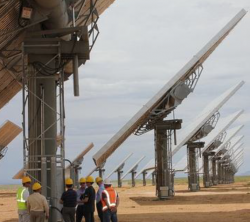
 Gazing up at a ridgeline above the lake, a shadow crosses Cook’s face. Amonix Solar has proposed a solar farm there that would scrape bare around 887 acres of brush-habitat and foraging grounds for local wildlife including the endangered tri-colored blackbird that makes its home here.
Gazing up at a ridgeline above the lake, a shadow crosses Cook’s face. Amonix Solar has proposed a solar farm there that would scrape bare around 887 acres of brush-habitat and foraging grounds for local wildlife including the endangered tri-colored blackbird that makes its home here.
Across town, BP (as in British Petroleum) has applied to build a 200+ acre solar farm, laying bare more land. Historic Highway 80, slicing through the heart of Jacumba and surrounding rural areas, has enormous gleaming towers from Sunrise Powerlink going up, with wires soon to be strung seemingly everywhere. West of town, San Diego Gas & Electric’s proposed ECO substation, if approved, would hook up to power lines from all the major energy projects in the area.
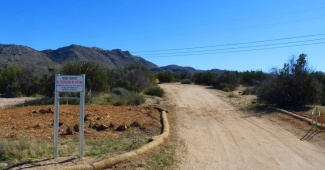 Worst of all, from the standpoint of locals and outdoor enthusiasts, are the Powerlink towers and soon, 124 wind turbines. Each will stand 450 feet tall—45 stories, or about a third the height of the World Trade towers demolished in the 911 attacks on New York. Each turbine will be taller than San Diego's Sea World Tower (which is 320 feet) and nearly as tall as the Great Pyramid at Giza (481 feet).
Worst of all, from the standpoint of locals and outdoor enthusiasts, are the Powerlink towers and soon, 124 wind turbines. Each will stand 450 feet tall—45 stories, or about a third the height of the World Trade towers demolished in the 911 attacks on New York. Each turbine will be taller than San Diego's Sea World Tower (which is 320 feet) and nearly as tall as the Great Pyramid at Giza (481 feet).
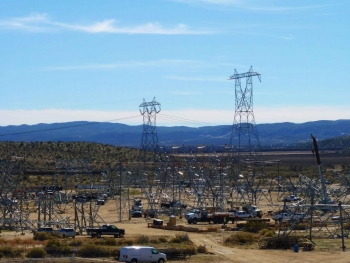 McCain Valley is a federal recreation area that was protected from developments until the Bush administration opened up Bureau of Land Management and National Forest lands for energy projects—a move the Obama administration has welcomed in its quest to forge forward on green, sustainable energy.
McCain Valley is a federal recreation area that was protected from developments until the Bush administration opened up Bureau of Land Management and National Forest lands for energy projects—a move the Obama administration has welcomed in its quest to forge forward on green, sustainable energy.
Powerlink now runs like a jagged scar along McCain Valley Road, dwarfing the once-landmark Lost Valley rock formation nea r a settler’s cabin from the 1800s, obliterating many other scenic vistas.
r a settler’s cabin from the 1800s, obliterating many other scenic vistas.
Turbines are set to line both sides of the road—the only entrance to Sawtooth wilderness area and the breathtaking Carrizo Gorge.
A rutted road leads to the Sacoton Overlook, 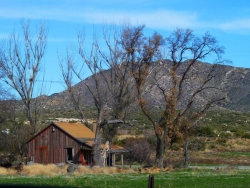 where the break-taking view of the gorge is magnified by the afternoon shadows that paint the deeply carved rock in shades of lilac, indigo and grey.
where the break-taking view of the gorge is magnified by the afternoon shadows that paint the deeply carved rock in shades of lilac, indigo and grey.
“This is our Grand Canyon,” Cook says with bittersweet pride.
Wind turbines will also surround Cottonwood and Lark campgrounds in McCain Valley Recreation Area, as well 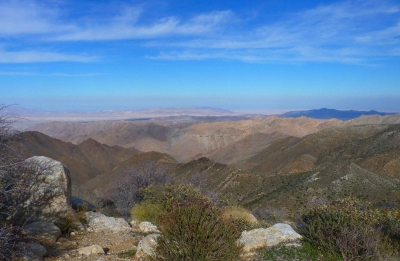 as rendering horse corrals for campers with equines virtually unusable.
as rendering horse corrals for campers with equines virtually unusable.
“Imagine turbines 450 feet tall, whirling, swishing, and you 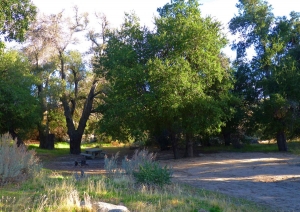 want to camp underneath? Hell no. You’d be scared to death,” exclaims Cook, who is a member of the Jacumba Sponsor group, the county’s advisory planning board for the area.
want to camp underneath? Hell no. You’d be scared to death,” exclaims Cook, who is a member of the Jacumba Sponsor group, the county’s advisory planning board for the area.
Tule Wind turbines would also block access to Thunder Caves, a popular spelunking destination with underground cathedrals and waterfalls. “It will be dangerous as hell,” declares Cook.
Where McCain Valley Road ends at the convergence of several creeks, access to the famed Pepperwood Trail to Anza Borrego will also be impacted.
Despite all of this havoc, Tule Wind recently received approval from the U.S. Department of Interior, which seemingly ignored the serious impacts on the environment, recreation, and the pride of a community. 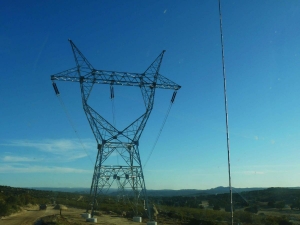
County approvals are still pending, but based on test wind towers already up and markings denoting where the goliath-scale turbines will be erected, it appears that McCain Valley is doomed, locals fear.
Originally the region was home to the Kumeyaay Indians. In the 1770s Juan Bautista de Anza led a Spanish colonizers.
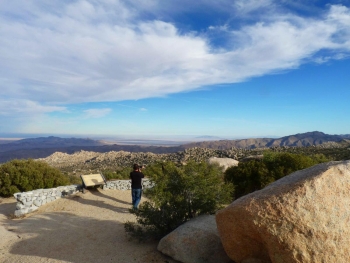
Apart from the scenic beauty, it's an area rich in history.
In the 1770s, Juan Bautista de Anza led Spanish settlers on a march through the region, including the Carrizo Creek. Carrizo Gorge also contains the historic Carrizo Gorge Railway Line, which opened in 1919 with a golden spike driven by John D. Spreckels. Trestles later collapsed or fell into disrepair, forcing closure of the line, though sections remain as a testament to a major engineering feat of the era.
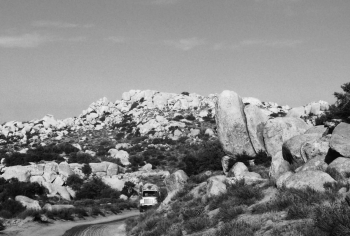 But how many will brave driving in the shadow of the wind turbines to visit these places in the future?
But how many will brave driving in the shadow of the wind turbines to visit these places in the future?
Locals also claim contractors are not always respecting artifacts when found. Cook notes that Jacumba’s Sponsor Group Chair, Mark Ostrander, “found a large piece of Kumeyaay pottery” along the Powerlink route. “They put a tower right over it.”
 Wind turbines have also had horrifying impacts on bird life in some areas, killing thousands of golden eagles at the Altamont Wind Farm alone. San Diego County is home to just 48 nesting pairs of golden eagles.
Wind turbines have also had horrifying impacts on bird life in some areas, killing thousands of golden eagles at the Altamont Wind Farm alone. San Diego County is home to just 48 nesting pairs of golden eagles.
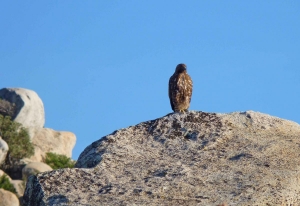 McCain Valley and other areas planned for wind energy in East County and Imperial Valley are prime eagle habitat, with rocky cliffs for nesting and abundant prey for foraging.
McCain Valley and other areas planned for wind energy in East County and Imperial Valley are prime eagle habitat, with rocky cliffs for nesting and abundant prey for foraging.
Other raptors call this region home, too, including some species of hawks that are rare for our region. Can they survive a veritable obstacle course of whirling turbines?
The turbines also kill bats, exploding their lungs due to air pressure changes.
“Bats eat gnats,” Cook notes. That’s a big deal in Jacumba, where the town has been battling a serious eye gn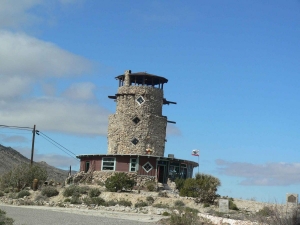 at infestation caused by a local organic farm at the town’s edge. (The idea of moving the Amonix Solar farm to the gnat-producing farm site instead may be a welcome proposal, some locals have hinted.)
at infestation caused by a local organic farm at the town’s edge. (The idea of moving the Amonix Solar farm to the gnat-producing farm site instead may be a welcome proposal, some locals have hinted.)
There’s more. At the eastern edge of Jacumba, where the historic Desert View Tower overlooks Ocotillo, another “protected” federal resource. Another proposed wind farm is slated to consume 140 acres of “protected” federal lands there.
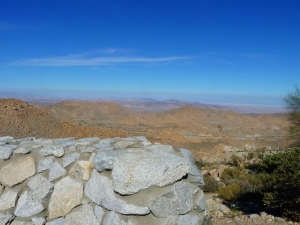
Federal push for clean energy and job creation
Clean energy is currently being pushed by the Obama administration as the energy of the future and as an economic stimulator.
“This country needs an all-out, all-of-the-above strategy that develops every available source of American energy a strategy that’s cleaner, cheaper, and full of new jobs,” said President Obama in his State of the  Union address this January.
Union address this January.
Such projects have potential to reduce the nation’s greenhouse gas emissions, lessen dependence on foreign oil, boost construction jobs and create limited numbers of permanent job opportunities for Americans.
Although clean energy offers the allure of a bright future, all major industrial projects bring baggage whether they are “environmentally friendly” or not.
Massive projects like the 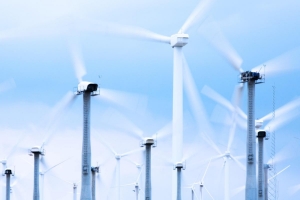 ones in Jacumba are beginning to pop-up all over the county, and adequate steps are not being taken to ensure the preservation of the environment, endangered species and towns around them.
ones in Jacumba are beginning to pop-up all over the county, and adequate steps are not being taken to ensure the preservation of the environment, endangered species and towns around them.
“I’m directing my administration to allow the development of clean energy on enough public land to power 3 million homes,” Obama said.
But how much is “enough” and how much is simply too much? Especially in a single region?
Mixed views—and many concerns
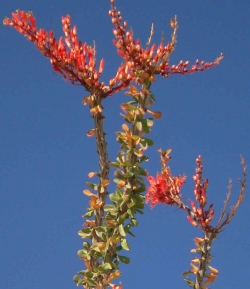 Native American tribes have filed a lawsuit seeking to stop destruction of cultural resources in Ocotillo, a place named for the brilliant red desert cactus flowers that bloom there each spring.
Native American tribes have filed a lawsuit seeking to stop destruction of cultural resources in Ocotillo, a place named for the brilliant red desert cactus flowers that bloom there each spring. 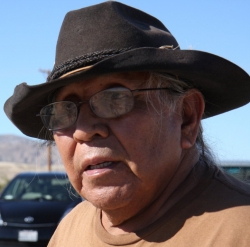
The area is rich in Native American cultural artifacts and is a popular tourist destination.
“I make my living off this view,” says Ben Schultz, who runs the Desert View Tower built by Jacumba’s town founder, which overlooks the Ocotillo valley, where wind turbines will soon line the ridges if the energy industry has its way. From the early 20th century, it has been a popular destination of motorists traveling from Arizona to California.
Schultz is outraged at the foisting of major energy projects on many of East County’s most scenic treasures, and feels rural residents’ voices are not being heard.
“We ought to quit believing that this is a democratic process,” he said, citing the influence of lobbyists on legislators and corporations wining and dining regulators.
Schultz attended a California Public Utilities hearing in Jacumba 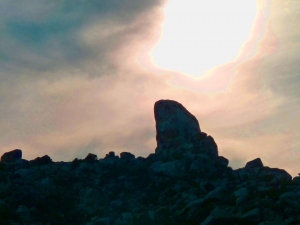 recently on the ECO substation project. “You go to CPUC meetings, it’s a kangaroo court. Same old thing-everybody’s crying,” he said, calling the big Powerlink tower in front of McCain Valley's Lost Valley Rock “a big F.U.”
recently on the ECO substation project. “You go to CPUC meetings, it’s a kangaroo court. Same old thing-everybody’s crying,” he said, calling the big Powerlink tower in front of McCain Valley's Lost Valley Rock “a big F.U.”
He paused, adding, “I’m a Quaker, completely committed to nonviolence. But if people get screwed enough, they could resort to violence.”
Not everyone shares his view. Dennis Ruth, known to locals as “Mountain Dennis,” takes a more pragmatic approach to the big energy projects dominating the high desert area where he lives. “We’ve gotta have them 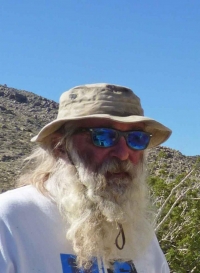 somewhere,” he says.
somewhere,” he says.
East County Chamber of Commerce President Scott Alevy ventured to Jacumba to speak in favor of the ECO-substation. The Chamber has been a vocal cheerleader for other SGD&E projects, notably Sunrise Powerlink. An SDG&E executive sits on the Chamber’s board and donations from the utility have supported various Chamber programs.
But Jacumba residents fear the big projects will be bad for local businesses, not good. Cook says the vast majority of Jacumba’s residents oppose the big energy projects—especially the wind farms.
He makes clear that he is not opposed to all big energy projects, and is willing to accept some in his community. What he wants, however, is common sense solutions—not rampant devastation.
“I’m not against electric lines…Small doses are okay,” he says. Cook likens the situation to the railroad lines that brought prosperity to some wild west towns, but “also brought everyone in who 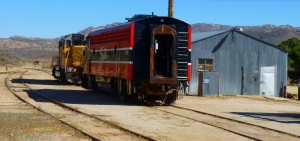 killed all the buffalos and the Indians.”
killed all the buffalos and the Indians.”
Cook says he could live with power lines and even wind turbines on the west side of McCain Valley Road, where a private property owner welcomes the income opportunities and the most cherished views would be preserved.
He is also open to the possibility of recommending approval of the BP solar facility, which would be located south of I-80 on private property adjacent to the border fence on land already impacted by the Southwest and Sunrise Powerlinks, as well as Border Patrol vehicles whose tracks criss-cross the relatively flat property.
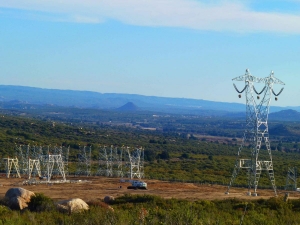 “I don’t trust BP,” Cook says, recalling the Gulf Coast oil spill. “But this one bothers me the least because it’s already electrified and this is solar, not wind.”
“I don’t trust BP,” Cook says, recalling the Gulf Coast oil spill. “But this one bothers me the least because it’s already electrified and this is solar, not wind.”
Cook voiced serious concerns over the massive Amonix solar project, however. He worries it could kill off the tri-colored blackbird. Flocks of them stop by a feeder in his backyard.
He also fears the scraping of 880 hilltop acres could destroy hydrology drainage patterns that feed the hot springs, which still bubble up at 101 degrees in a spring at the lake’s edge.
Big dreams for Jacumba—or a nightmare future?
 Jacumba’s name means “Bubbling Waters” Cook explains—and it’s the hot springs that gave this town celebrity status in a bygone era.
Jacumba’s name means “Bubbling Waters” Cook explains—and it’s the hot springs that gave this town celebrity status in a bygone era.
A lavish hotel here was once a draw for legends of Hollywood including Clark Gable. The old Jacumba Hotel burned down and the famed bathhouse across the street now stands in ruins. But a smaller spa/hotel has changed hands and a new owner has big remodeling plans.
Now some residents working on grand plans to revitalize the town, hoping to recreate its lost heritage including the railway line, bath house and perhaps even the hotel—or a museum commemorating its historic role. There are rumblings of changes to the town’s commercial district as well to lure new tenants in and give facelifts to some faded and boarded up facades. (Watch for an upcoming ECM special report on this soon.)
There is a tragic irony that just as tourism revitalization plans are in the pipeline, the very attractions that have long drawn people to this region are now in jeopardy.
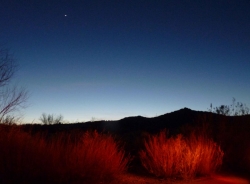 At night, only the sounds of frogs croaking and crickets chirping disturb the night’s silence. But soon, wind turbines and huge solar panels will be visible on the hills around the town, even from marring views at the De Anza Resort, a clothing-optional community that includes many permanent residents who’ve moved out here to enjoy nature au natural.
At night, only the sounds of frogs croaking and crickets chirping disturb the night’s silence. But soon, wind turbines and huge solar panels will be visible on the hills around the town, even from marring views at the De Anza Resort, a clothing-optional community that includes many permanent residents who’ve moved out here to enjoy nature au natural.
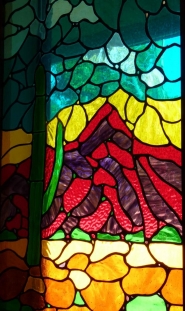 Cook loves this community. He and his wife visited here often before moving out here three years ago with plans to help revive the town. His eclectic home includes a stained glass window depiction of Jacumba Peak.
Cook loves this community. He and his wife visited here often before moving out here three years ago with plans to help revive the town. His eclectic home includes a stained glass window depiction of Jacumba Peak.
But soon, much that the Cooks cherish will be gone—unless action is taken at the federal level to reverse the damage slated to be done.
Foreign profits and broken promises from big energy developers
Cook is angry that taxpayer money is being used for projects that he suspects are boondoggles benefitting big companies like BP and Sempra Energy. “All this is subsidized by your and my tax money,” he grumbles. To Cook, the major “green” aspect of these projects is the money changing hands.
He’s also disturbed that foreign companies seem to be reaping much of those profits. The wind turbines are being built by Iberdrola, a Spanish manufacturer. BP is British-owned and Powerlink’s towers are made of Korean steel.
Amonix is an American company. Its CEO died in a plane crash Christmas Eve. What of all those permanent jobs Amonix promises to deliver? The same promises were made in Nevada, where earlier this month Amonix announced sweeping lay-offs at its solar facilities.
East County residents have also lost faith in regulators and utility companies, having lived through broken promises by SDG&E on its Powerlink project—a project approved by the state CPUC despite massive environmental damage and an EIR which called Powerlink “a severe and unmitigable fire hazard” to this fire-prone region.
Local planners struggle to address impacts of massive power projects
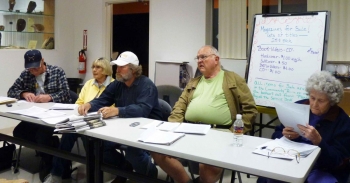 At a meeting of the Jacumba Sponsor Group, held at the town’s small library, it’s obvious that the scope of the mammoth energy projects is far beyond what local planners have ever seen before.
At a meeting of the Jacumba Sponsor Group, held at the town’s small library, it’s obvious that the scope of the mammoth energy projects is far beyond what local planners have ever seen before.
“What’s an MUP?” one planner asked. Apparently, he’d never had to review a Major Use Propoal before. Much of the agenda dealt with typical small town issues, such as planning a community garden.
The two solar farms are both in preliminary application stages. Residents and planners had many questions, most without answers.
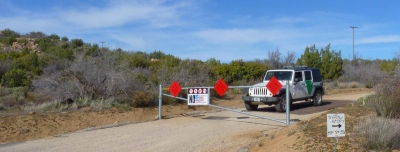 Can solar panels blind birds—or motorists on historic Highway 80?
Can solar panels blind birds—or motorists on historic Highway 80?
Law enforcement concerns regarding the solar projects are also paramount in this region that hugs the international border, a place where “border booties” are left dangling from trees to aid smugglers and undocumented immigrants.
“Potentially we’d have concern—do we still have access to it? Not just for us but for the Sheriff, also,” Border Patrol Agent Cory Anderson with the Boulevard Border Patrol Station, U.S. Department of Homeland Security, told ECM.
 Boulevard Planning Group Chair Donna Tisdale, whose town is similarly impacted by mammoth energy projects, notes that one of the proposed solar farms is home to the endangered Peninsular bighorn sheep and Quino Checkerspot butterfly.
Boulevard Planning Group Chair Donna Tisdale, whose town is similarly impacted by mammoth energy projects, notes that one of the proposed solar farms is home to the endangered Peninsular bighorn sheep and Quino Checkerspot butterfly.
A ripple stirs through the crowd at an announcement that the librarian’s son saw a “black panther” bounding across Highway 80 earlier in the day. (More likely, it was a black jaguar, a rare resident of Mexico just across the border. This is one of several reporting sightings recently in East County.)
Given that reports of other threatened or endangered species were largely ignored to push through approvals of Tule Wind and Powerlink, however, the fate of those rare species remains at risk.
County and private lands also impacted, raising new concerns
Not all of the projects proposed are on public lands. Some are on County property. But the Board of Supervisors is weighing a wind ordinance (still open for public comments) that would make it easier to build more large-scale wind farms in San Diego County.
 Chairman Ostrander said the County’s proposal doesn’t account for differences in how it plans to treat large-scale turbines versus small-scale residential windmills. “That the County does not separate that out gives me heartburn,” he said.
Chairman Ostrander said the County’s proposal doesn’t account for differences in how it plans to treat large-scale turbines versus small-scale residential windmills. “That the County does not separate that out gives me heartburn,” he said.
Tisdale agreed. “They say they’re not an industrial operation. Well what the heck are they? They are selling products to the grid. That’s commercial, but the County won’t call it industrial.”
One audience member retorted, “They’re calling a giraffe a seagull!”
Other properties are on private property. But even those raise some serious issues.
One of those is the loss of agricultural lands—and some unintended consequences now being felt in East County.
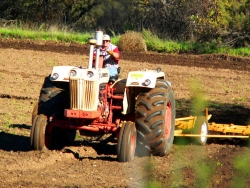 “They are buying up agricultural land because it’s cheap and you don’t have to do an environmental 10-year review,” Richard Edword, owner of Kamp’s Propane in Alpine, told ECM during the Jacumba meeting. Some have already been built in Imperial County—and additional solar farms are proposed for Alpine, Ramona, and other East County communities.
“They are buying up agricultural land because it’s cheap and you don’t have to do an environmental 10-year review,” Richard Edword, owner of Kamp’s Propane in Alpine, told ECM during the Jacumba meeting. Some have already been built in Imperial County—and additional solar farms are proposed for Alpine, Ramona, and other East County communities.
“Solar farms being built on former agricultural lands for alfala is driving hay costs way up -- $20 a bale,” he said, then revealed a shocking result.
“People are giving up their horses and turning them loose in the Laguna mountains because they can’t afford a bale of hay.”
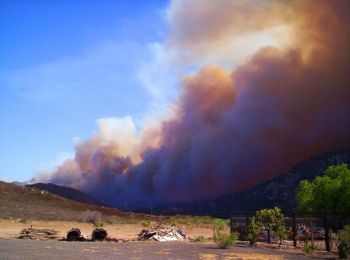 Ostrander also warned that the projects would be “bringing up the potential for wildfire exponentially” due to transformers and high-voltage wires lacing this tinderbox-dry backcountry region already ravaged by the 2007 wildfires, the worst in California’s history at that time.
Ostrander also warned that the projects would be “bringing up the potential for wildfire exponentially” due to transformers and high-voltage wires lacing this tinderbox-dry backcountry region already ravaged by the 2007 wildfires, the worst in California’s history at that time.
Three of those fires were caused by poorly maintained SDG&E power lines. (The utility is now asking the CPUC for permission to charge ratepayers for its uninsured liability costs from those fires.)
Ostrander also voiced concern for impacts on property values in the area, a concern shared by many here in Jacumba and nearby Boulevard.
The Jacumba Sponsor group voted unanimously on a motion to send a letter to the County outlining their concerns about the Solar projects. They have already weighed in against some other major projects, though it’s seemed to accomplish little.
Paradise lost? Locals feel abandoned by federal, state and local representatives and regulators
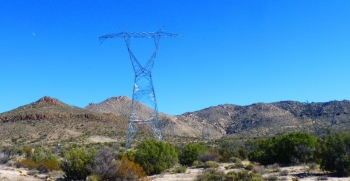 “They’re building an electric corridor out here,” Cook told ECM, frustrated by his belief that federal, state and most County officials have abandoned their rural constituents (Supervisor Dianne Jacob being a notable exception).
“They’re building an electric corridor out here,” Cook told ECM, frustrated by his belief that federal, state and most County officials have abandoned their rural constituents (Supervisor Dianne Jacob being a notable exception).
Instead, those at the highest levels have yielded to powerful interests pushed by well-financed lobbyists for profit-oriented power companies, as well as the siren’s lure of a renewable energy vision that fails to consider devastating environmental or recreational impacts.
“Don’t you just love the green energy industry?” Danielle Cook said, her voice edged with sarcasm.
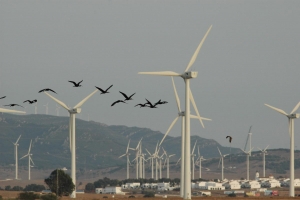 Ostrander shot back, “Green dollars.”
Ostrander shot back, “Green dollars.”
Cook reported one bright spot at the meeting—Audubon Society’s pledge to restore the Lake Jacumba. “Restoration of the lake for tri-colored blackbirds will once again put Jacumba on the map,” he tells the audience.
But will the rare birds—along with townspeople’s dreams of revitalizing their community and restoring tourism—die out in the wake of so many massive energy projects that soon may dominate the town and its surroundings, including the most pristine areas that remain?
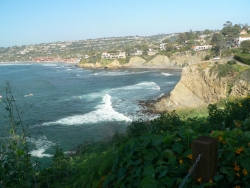 Cook voiced outrage that power projects aren’t placed near the areas where that power is needed. It’s unfair, he believes, for coastal and urban residents in wealthier enclaves to fill their power needs at the expense of rural residents’ lifestyles.
Cook voiced outrage that power projects aren’t placed near the areas where that power is needed. It’s unfair, he believes, for coastal and urban residents in wealthier enclaves to fill their power needs at the expense of rural residents’ lifestyles.
“The wind blows all the time off La Jolla, but they won’t put it out there,” Cook says of the wind farm set to despoil McCain Valley and views across the region.
Sadness tinges his voice as he concludes, “They want to put it out here-- because we’re throwaway country people.”
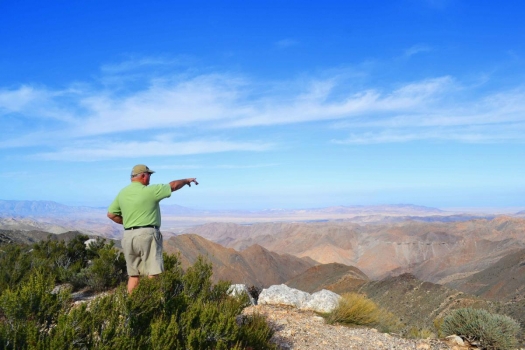
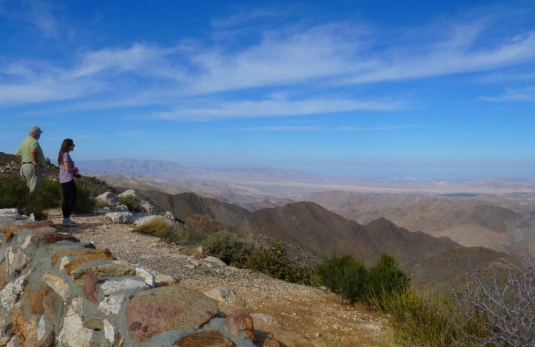
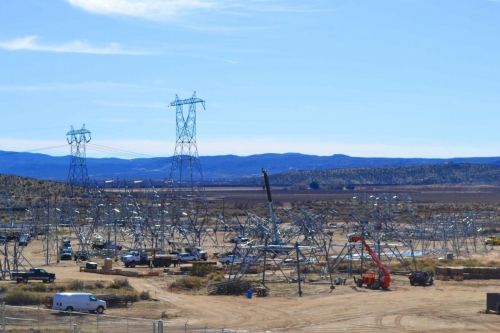







Comments
JACUMBA: A TOWN SURROUNDED
Destroying nature in the name of Green--"renewable"--energy. What cruel irony. (Articles like this really bring out the eco-terrorist in me.)